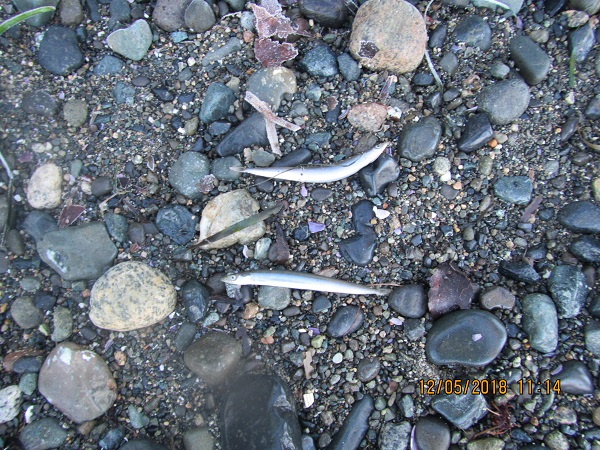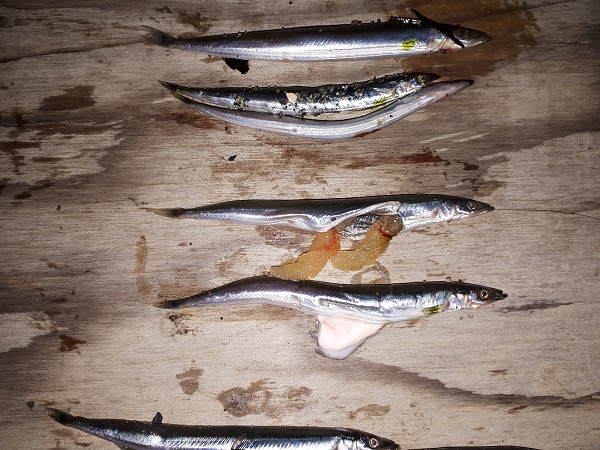Spoiler Alert: Sand Lance Found on Beach

Not to be discouraged, we decided that we just needed to hone our skills. On December 5, we descended upon San Pareil beach with equipment and data sheets in hand, determined to collect some eggs and embryos to prove to the world the beach is a forage fish spawning ground. And what did we find? Sand lance scattered across the beach, suggesting that sand lance had been spawning there the night before. Well that was easy. Who needs to go through the process of looking for tiny eggs and embryos in the sand when the fish are just going to throw themselves up on the beach for us to prove they were there. And just to make sure the sand lance were there for the purpose of spawning, our CSI guy (Crazy Scientist In-charge), Pete Law, dissected 13 specimens. He found 3 females with ripe eggs, 1 female that was spawned out, and nine males with milt.(For those of you who enjoy that sort of thing, the morbid results of Pete's dissections are in the photo below.)
Why did some of the sand lance die on the beach? Our hypothesis at the moment is that we had very cold temperatures the night before and the fish, being cold-blooded, sucuumbed to the unseasonable temperatures. We are checking with Ramona and other forage fish groups to determine if our hypothesis is correct and if anyone else has experienced this occurence. In the meantime, we will continue to sample the beaches in our area for evidence of forage fish spawning.
